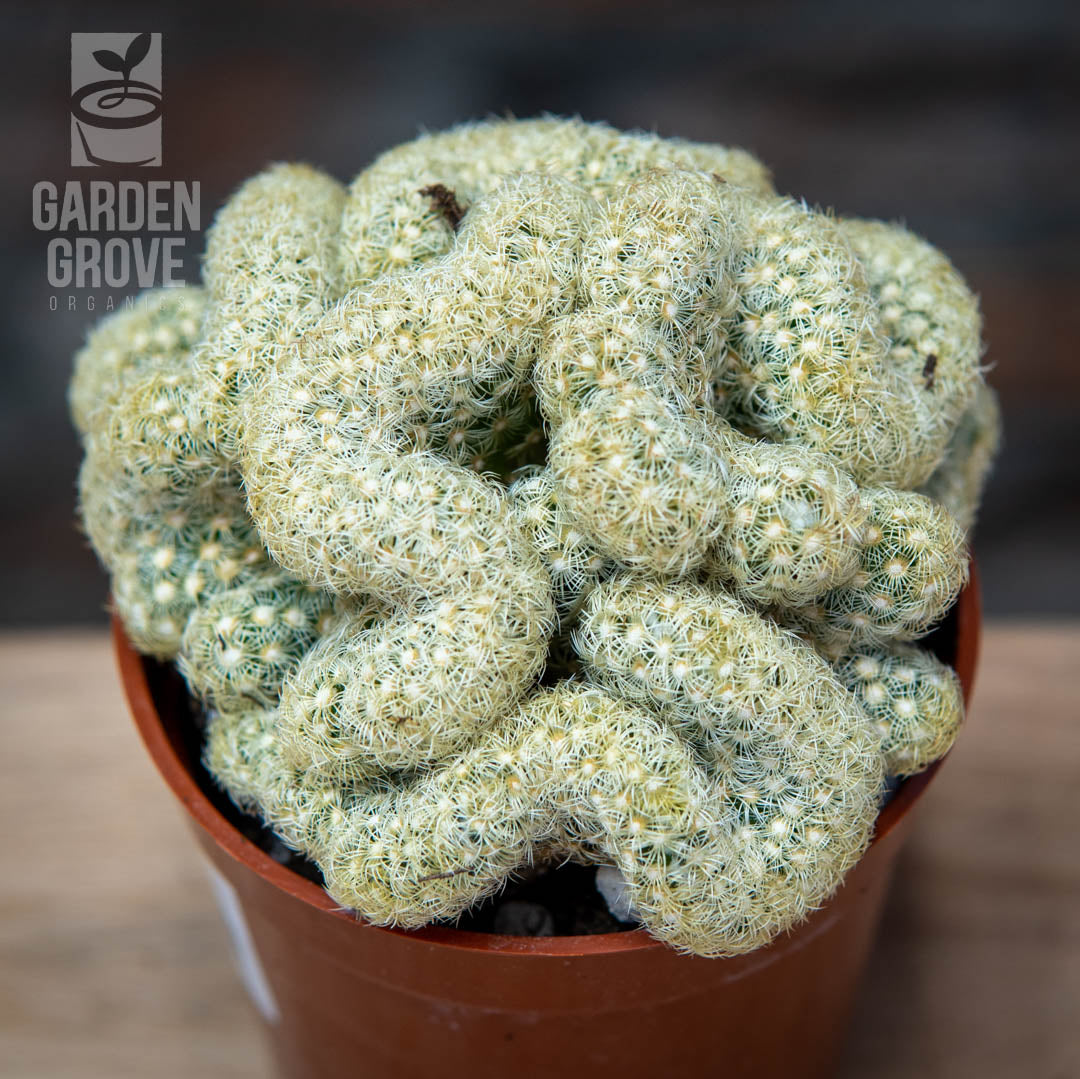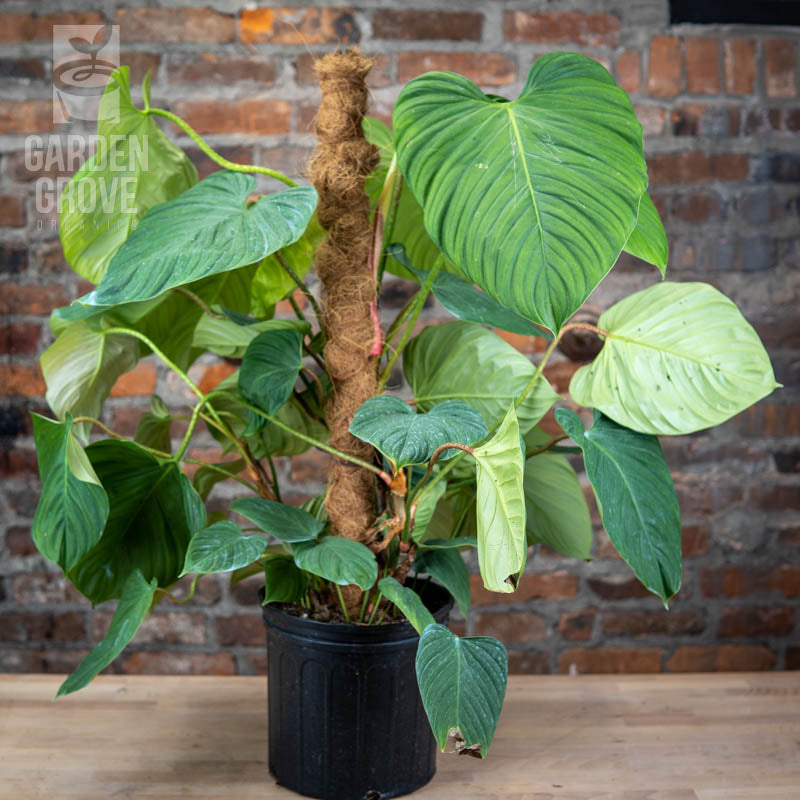Description
The brain cactus, scientifically known as Mammillaria elongata, is a small and unique cactus species native to Mexico. It gets its common name from its distinctive globular shape, which resembles a brain or a cluster of rounded protrusions. Here are some key features and characteristics of the brain cactus:
-
Appearance: The brain cactus has a compact, spherical or cylindrical shape with numerous tubercles (rounded projections) covering its surface. The tubercles are densely packed and give the plant its characteristic brain-like appearance. The color of the cactus can range from green to gray-green, and it may have spines emerging from the tubercles.
-
Size: Brain cacti are relatively small, typically growing to a height of 4 to 6 inches (10 to 15 centimeters) and a diameter of about 3 to 4 inches (8 to 10 centimeters). However, they can slowly grow larger over time.
-
Spines: The brain cactus has short, rigid spines that emerge from the tubercles. The number and length of spines can vary between individuals and can be straight or slightly curved. The spines are usually white or yellowish in color.
-
Flowers: In spring or early summer, the brain cactus produces small, bell-shaped flowers that grow from the base of the tubercles. The flowers are typically pinkish-white or pale yellow in color and may have a pleasant fragrance. They last for a few days before fading away.
-
Care Requirements: Brain cacti are relatively easy to care for and are suitable for indoor cultivation. Here are some general care tips:
- Light: Provide bright, indirect sunlight for the brain cactus. It can tolerate some direct sunlight but should be protected from intense midday sun to avoid sunburn.
- Temperature: The brain cactus prefers warm temperatures, ideally between 70°F and 85°F (21°C to 29°C) during the growing season. It can tolerate slightly cooler temperatures in winter, but avoid exposing it to freezing temperatures.
- Watering: Allow the soil to dry out between waterings. It’s important not to overwater the brain cactus, as it is susceptible to root rot. During winter dormancy, reduce watering frequency.
- Soil: Plant the brain cactus in a well-draining cactus mix or a mixture of potting soil and sand. The soil should allow excess water to drain quickly to prevent waterlogged roots.
- Humidity: The brain cactus can tolerate average indoor humidity levels and does not require high humidity.
- Fertilization: Feed the brain cactus with a diluted cactus or succulent fertilizer during the growing season, following the instructions on the fertilizer packaging.
- Repotting: Repot the brain cactus when it outgrows its current container, typically every few years. Use fresh potting mix and a slightly larger pot.
The brain cactus is a visually intriguing and low-maintenance plant, making it a popular choice for cactus enthusiasts and collectors. With proper care and attention to its specific needs, it can thrive and bring unique charm to your indoor or outdoor space.




Reviews
There are no reviews yet.